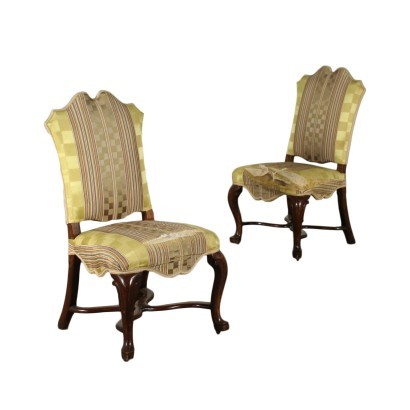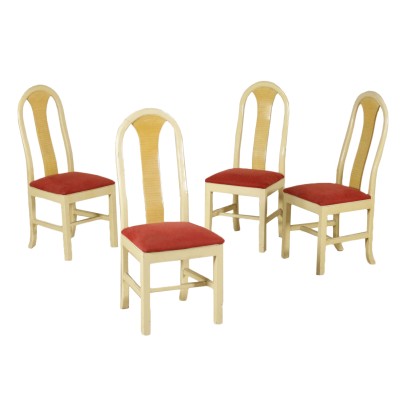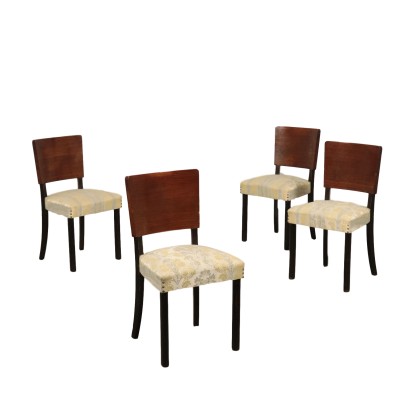Pair of Tuscan chairs on an English model
Features
Age: 18th Century / 1701 - 1800
Origin: Toscana, Italy
Material: Padded
Description
Pair of Tuscan chairs on an English model, supported by legs of which the front ones are moved and connected by a cross; in walnut and poplar, the seat and the raised back are padded.
Product Condition:
Product in fair condition showing some signs of wear.
Dimensions (cm):
Height: 103
Width: 57
Depth: 60
Seat height: 47
Additional Information
Age: 18th Century / 1701 - 1800
18th Century / 1701 - 1800Main essence:
Walnut
Walnut wood comes from the plant whose botanical name is juglans regia , probably originally from the East but very common in Europe. Light or dark brown in color, it is a hard wood with a beautiful grain, widely used in antique furniture. It was the main essence in Italy throughout the Renaissance and later had a good diffusion in Europe, especially in England, until the advent of mahogany. It was used for solid wood furniture and sometimes carvings and inlays, its only big limitation is that it suffers a lot from woodworm. In France it was widely used more than anything else in the provinces. In the second half of the eighteenth century its use decreased significantly because mahogany and other exotic woods were preferred.Poplar
Essence considered "poor", it is a white wood, with yellowish or greyish shades, light and tender, which is easily damaged. It is used for rustic furniture or in the construction of furniture. The most valuable use it has had in the history of furniture is in Germany, in the 19th century, for veneers and inlays in the Biedermeier period.Material: Padded
Alternative proposals

























